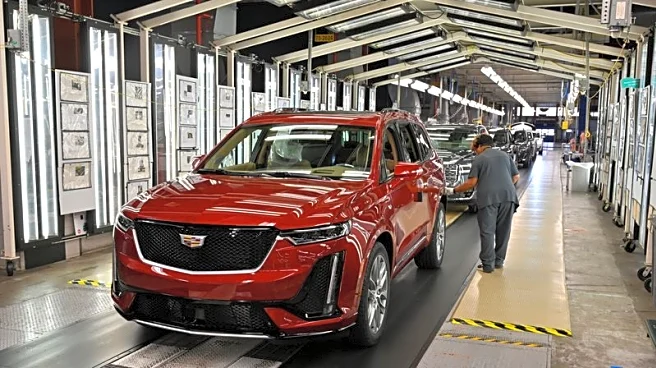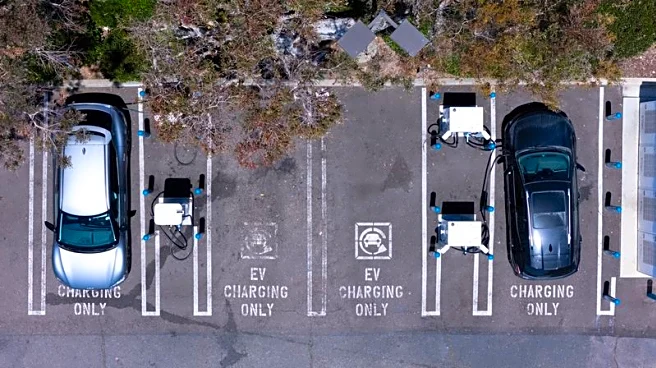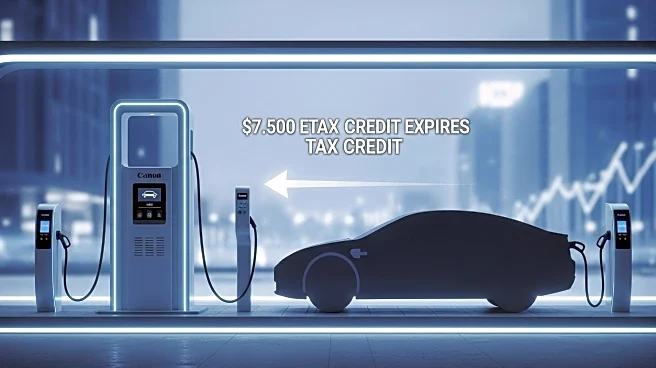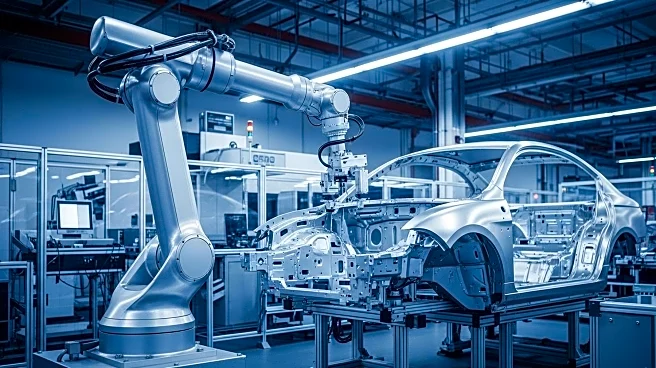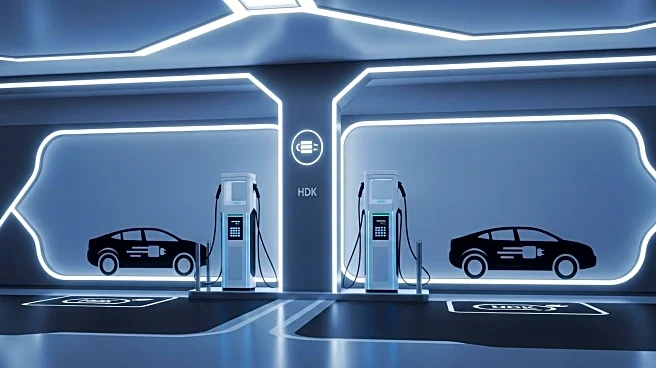What's Happening?
President Donald Trump is reportedly considering significant tariff relief for U.S. auto production, a move that could substantially reduce costs for major car manufacturers. According to a report from Reuters, the potential changes include extending a tariff offset of 3.75% for five years and adding U.S. engine production to the relief. This development has led to a positive reaction in the stock market, with shares of major U.S. automakers such as Ford, General Motors, and Stellantis experiencing notable increases. Ford, which assembles the most vehicles in the U.S., saw its stock rise to a new 52-week high. The report cites Republican Senator Bernie Moreno of Ohio and auto industry officials, who suggest that this change could effectively eliminate much of the costs that major car companies are currently incurring due to tariffs.
Why It's Important?
The potential tariff relief is significant for the U.S. automotive industry, which has been burdened by high costs due to existing tariffs on imported vehicles and parts. These tariffs have been a major concern, costing companies billions of dollars. By reducing these costs, the relief could enhance the competitiveness of U.S. automakers, encouraging more domestic production and potentially leading to job growth in the sector. The move could also signal a shift in trade policy under President Trump, emphasizing support for domestic manufacturing. Automakers like Ford, GM, and Stellantis stand to benefit significantly, as they are among the top producers of vehicles with domestic content.
What's Next?
If the tariff relief is implemented, it could lead to increased investment in U.S. auto manufacturing facilities and potentially influence other sectors reliant on imported components. The decision may also prompt reactions from international trade partners and could be a point of discussion in future trade negotiations. Stakeholders in the automotive industry, including labor unions and suppliers, will likely monitor the situation closely to assess the impact on jobs and production costs.


